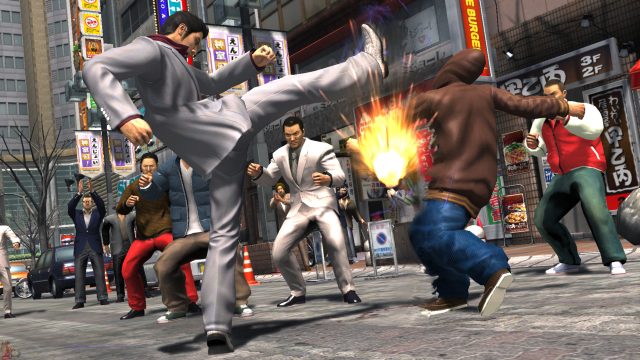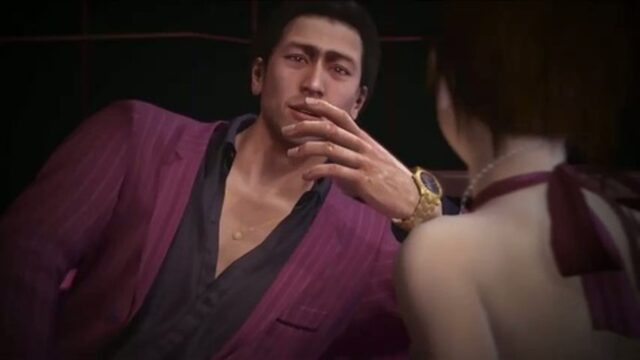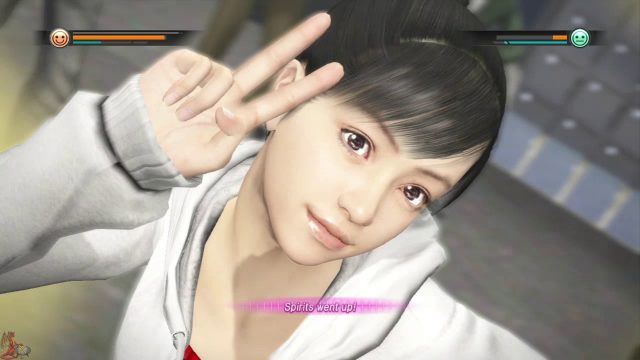Yakuza Remastered Collection Review
Kamurocho Dreamin’
It’s a shame the Yakuza series flew under many western RPGamers’ radars for so long; it wasn’t until the series hit its sixth numbered entry that it started to benefit from an earnest marketing push. Even then, localized versions of the games were typically lagging one to three years behind their Japanese counterparts, so it wasn’t until 2017 that new entries and remakes of older titles started to become more widely known, first with the release of Yakuza 0, followed by Yakuza Kiwami, Yakuza 6, and Yakuza Kiwami 2 over the next few years. But the Yakuza series is a beast of a narrative that isn’t meant to be experienced out of order or out of context, and a substantial gap still remained for many gamers.
Enter the Yakuza Remastered Collection, which consists of remastered versions of Yakuza 3, Yakuza 4, and Yakuza 5, making every single entry of the saga playable on one console (initially PlayStation 4, with other platforms added since). The series, when experienced as a whole, is an easy recommendation for those who love a good character-driven story. Each individual game in this collection earns the same high marks they’ve always received by virtue of being a part of the collective whole, though there are some rough spots along the way. However, between graphical upgrades, improved translations to more seamlessly tie all seven games together, and some restored content that was trimmed from previous releases, there’s little reason for anyone — including those who already played the earlier releases — to miss out on this stylish yet cheesy Japanese crime saga.
Trying to sum up the Yakuza series’ plot here would be a fool’s errand, not least because each game generally presents a self-contained story that’s encapsulated in the continuous digital universe the games are set in, with familiar faces and places frequently popping in and out of each game’s story at will. In general terms, the series follows Kazuma Kiryu, an ex-member of the Tojo Clan’s Dojima Family, which he left after being imprisoned for ten years for a murder he didn’t commit. Each game in the series sees Kiryu get dragged back into the life of crime he left behind, despite his many attempts to steer clear of it. Over the course of the series, time marches on, spanning almost twenty years between Yakuza 0 and Yakuza 6. As Kiryu and those around him grow older, friendships are tested or fall by the wayside, and new allegiances are formed. This is what makes having all episodes playable under one console roof such a big deal.
Yakuza 3 is sometimes treated as “the one that can be skipped”, but this would be doing subsequent games a huge disservice; like all games in the franchise, each entry sets up as many plot threads and characters that bleed through to later entries as it resolves. Even treated as a stand-alone title, Yakuza 3‘s story merits playing, even if the game lacks refinements needed elsewhere. It introduces the Morning Glory orphanage, as well as its kids, which becomes a huge driving force for Kiryu going forward, as well as characters that continue to figure into future narratives, like Goh Hamazaki. Meanwhile, Yakuza 4 introduces the multi-protagonist format that Yakuza 5 also follows, splitting the story amongst four initially unrelated characters, only to weave all narratives together towards the end. Series stalwarts Shun Akiyama and Taiga Saejima are both introduced here, and the remaster manages to really dial into a sweet spot between having more polished gameplay than its predecessor but avoiding the content bloat present in the subsequent entry. Yakuza 5, featuring what’s likely the longest story, refrains from introducing too many new main characters, instead wisely giving players more of several fan favorites. It also marks the first time Haruka, Kiryu’s adopted daughter, becomes a playable character, shaking up the series’ traditional brawler formula a bit, and really pushes the series to new cinematic heights.

Yakuza 3 marks a bit of a departure from what came before, but it’s far from a standalone chapter in the saga.
The improvements made to these remasters goes beyond just a fresh coat of paint, even though each game has indeed received a graphical facelift. When it was first ported to the west, Yakuza 3 suffered from some content cut for one reason or another. Much of that content has been restored, including several substories and side activities, with the exception of a handful of insensitive substories featuring a transphobic character that have been cut entirely. On the other hand, it is now the oldest entry in the series (if one foregoes 1 and 2 in favor of the Kiwami remakes) and it’s starting to show its age. While graphics have been punched up across the board, they are of variable quality, and one needs to keep in mind that Yakuza 3 was originally developed using an older graphics engine, with a new engine not being implemented until Yakuza 5. Those expecting the glitz and glamour visible in the Kiwami remakes will be initially disappointed; what’s here more resembles a new coat of polish, with things like NPC animations noticeably behind each game’s main cast of characters.
Still, each remaster looks better than its original incarnation, and the progression from one to the next is visibly apparent. By the time one gets to Yakuza 5, all the rough edges have been ironed out and the game looks amazing, making for a much more satisfying feast for the eyes. The propensity toward more elaborate storytelling is plainly evident in this collection; later releases become more and more cinematic, with progressively more lengthy interludes and voice acting, even during in-engine scenes. Yakuza 5 does go past the tipping point a little too frequently, putting such an emphasis on delivering a lengthy narrative that gameplay can feel sidelined for long stretches. Climactic finales still follow the tradition of featuring epic mandatory rooftop battles, and, no matter how high the graphical fidelity gets, representing realistic fingers continues to be an elusive unicorn, more closely resembling freezer-burned turkey sausages.
Though largely untouched, the games’ musical scores and voiced dialogue — all in Japanese, of course — are of top quality. Realism is the chief goal when traversing the environments; in the absence of music, a lifelike cacophony of pedestrian chatter, distant car engines, and snatches of musical jingles designed to lure passing customers into nearby stores and businesses fill the world. Cinematics, on the other hand, are underscored by poignant musical compositions. Characters are fully voiced during these cinematics, and as the series goes to its later entries, the voiced dialogue also greatly extends outside of cinematics. Considering the large cast of characters across three separate entries, one might expect to find variable quality in the voice actors, but each one is of a very high caliber.
Another aspect that has been improved for all three releases are the translations. The original releases effectively operated a bit more independently from each other, and weren’t as beholden to tracing a through-line across the whole series’ narrative. But since Kiryu’s saga has now gotten a finale, a prequel, and complete remakes of its first two entries, the translations for these remasters have been tweaked to fit more seamlessly into the existing Yakuza universe. Not only is terminology consistent, but there’s a lot of characterization happening in the revised dialogue. The humor, stoic dignity, and warm affection these characters have toward each other is so deftly woven into the script that one can easily forget they are simply fictional characters in a video game. There are also some more superficial changes that have been made, such as the replacement of Yakuza 4′s Masayoshi Tanimura with the likeness of his new actor Toshiki Masuda. Those who’ve never played these three games obviously won’t notice any differences, but the improvements and changes definitely work in the games’ favor, and are emblematic of the care that has gone into making these remastered releases the definitive versions of all three games.

Let’s be honest: Shun Akiyama steals the spotlight when he arrives as Yakuza 4’s first playable protagonist.
Upgrades and reinstated content aside, the Yakuza series is known for delivering a strong narrative in an open world designed to provide the player with more side content than one can swing a twisted bicycle frame at. The series’ world-building is extraordinarily realistic, featuring many locations that will become as real to the player as any location in the real world. Each game ups the ante on the number of locations available for exploration, with each city district modeled on real-life locations throughout Japan. Those who’ve had their fill of running around Kamurocho in previous entries, modeled after Tokyo’s red-light and entertainment district Kabukicho, will be delighted to learn that the series began to expand its geographical horizons with these entries. Part of what makes Yakuza 3 stand out from the pack is the decision to take players from the crowded Tokyo nightlife to the sun-drenched beaches of Ryukyu, on the island of Okinawa, alternating between the two. Yakuza 4 does return focus to Kamurocho, but expands its scope to include a large rooftop area and a vast underground parking structure, while Yakuza 5 goes all-out with four protagonists spread across five unique cities. Since Kamurocho is such a constant — essentially the series’ silent co-star — it’s fascinating to follow how it changes over time, from the erection of Millennium Tower in the early games to the eventual completion of the Kamurocho Hills construction project in Yakuza 5, while the names of locations like the Hotel District, the underground mall, West Park, and the subterranean Purgatory will immediately conjure up a mental tour of the city in the minds of long-time fans.
While traveling the streets and alleys, players can engage in substories, which function as Yakuza’s sidequests — vignettes involving dialogue, combat, or other activities that award experience points, money, and other key items as well as interesting bits of narrative and character growth. There are hundreds of substories across all three remasters, including the few aforementioned reinstated ones, and these are as much of a draw to the series as the main narrative. Whereas the games’ main stories are fantastic and take themselves absolutely seriously, it’s these substories that let the writers cut loose. The amount of zany, off-the-wall characters players will encounter and situations they will help resolve is nothing short of impressive. One moment may see players completing a simple fetch quest to the nearest convenience store, while in the next they’ll run into a caped crusader trying to put a damper on local crime, hunt down a ghost haunting the arcade’s photo booth, solve a murder at a café, or play wingman on a group date to help out a couple of hapless love fools. These substories are the variety that provides that all-important breathing room from the main drama.
There are dozens of further activities to take part in. A visit to any city’s Club Sega arcade lets players try out real-life arcade titles like Virtua Fighter or Taiko no Tatsujin, as well as the UFO Catcher claw game. Cities feature massage parlors, batting centers, karaoke bars, and other activities that can be enjoyed in the form of mini-games. There are also plenty of collectibles to find, from coin locker keys to photo spots to scavenger hunt clues. Individual games go even further, including cabaret club hostess make-overs and management, a snowball battle arena, and a professional chicken racing circuit. Yakuza 5 also introduces side stories, character-specific quest chains that offer dozens of additional missions, adding more story beats and experience to grind: Kiryu’s Taxi Driver missions introduce a bona fide driving and racing mini-game, Saejima’s Survival arc pits players against nature in a mountain hunting simulation, and Haruka’s aspirations of becoming a successful teen idol incorporate a fully fleshed-out dancing rhythm game. The full list doesn’t end here, but includes fishing, air hockey, billiards, darts, bowling, a fighting arena, golf, a side-scrolling brawler game, any number of gambling activities, and hostess club dating sequences. The list is so expansive that each game in the series can easily top eighty hours’ worth of content on its own, giving the collection immense value for money.

Each protagonist plays differently, but Yakuza 5’s Haruka literally shakes combat up for the first time.
Of course, no trip through a city’s seedy underbelly would be complete without plenty of fisticuffs to accompany it. Up until Yakuza: Like a Dragon, combat in the Yakuza series has always been rooted in brawler action. Each game sort of reinvents the wheel here, and since Yakuza 4 and 5 both feature multiple protagonists with their own martial arts expertise, there are several fighting styles to get used to even within individual titles. None of the games offer quite the same level of combat refinement as seen in the Kiwami remakes, however, and each game ranks slightly differently on the difficulty and encounter rate scales. Yakuza 3 probably clocks in as the toughest sell, with a pretty high rate of encounters coupled with a more basic combat system, with Kiryu being the sole playable character. Enemies are also far more likely to gang up on Kiryu here, making for some frustrating moments of being unfairly stun-locked over and over. Both the other titles benefit from the inclusion of a walk button, making it possible to lose the interest of bad dudes who are looking to scrap. Even without this, Yakuza 4 has the lowest natural encounter rate of the bunch, with 5 finding a happy medium. Bosses are a different story, as they can be quite challenging (or have ludicrous amounts of health), requiring a tight grasp on either the games’ combo systems or how to cheese certain situations.
The Yakuza series as a whole is a true gem in gaming history, and over the last few years has thankfully started to earn the recognition it deserves. Despite carrying over a few blemishes as part of its faithful remasters, the Yakuza Remastered Collection, while by no means marking a good jumping-in point for those new to the series, ably fills that Yakuza 3, 4, and 5-sized hole left on modern consoles. More than that, it does this with updated, upgraded, and more complete versions of all three games without losing any of the completely zany, over-the-top cheese and machismo that make this Japanese soap opera so worthwhile. The Yakuza games are very much their own thing, and are so densely packed with content that they may require some palate-cleansers in between. But for those who don’t mind doing some serious homework in the form of three mandatory amazing-in-their-own-right prequels, this collection is easily a must-play.
Disclosure: This review is based on a free copy of the game provided by the publisher.


Three indispensable entries in a series that's no less than a modern classic
Graphical upgrades means even when things get ugly, they look better than ever
All the substories, side stories, and mini-games one could ever want, and even a few more reinstated ones
Not all games have aged equally well
While other entries have been entirely remade, these remasters have kept the good along with the bad






Recent Comments